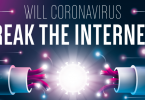aNewDomain.net — One of the companies that has changed the face of the computer age is Intel. If you’re town for WWDC 2013, you totally should check out the Intel Museum down Silicon Valley way.
It is worth it, as you’ll see below.
Intel, after all, is a stalwart bastion of Silicon Valley. I’d even argue it is a keystone of Silicon Valley because its processors are made from purified silicon. That’s why the Intel Museum in Santa Clara, Calif., is so cool. Here’s a collection of thoughts and photos I gathered while visiting.
Fairchild Semiconductor, also in Silicon Valley, is the company that begat Intel, of course. That’s where Bob Noyce started out before venturing out to start a company with some associates. He said the corporate culture at Fairchild was too constraining.
Quotes from Intel founder Bob Noyce are all over the place at the Intel Museum. One of them states that Noyce’s greatest satisfaction was in “having developed a meritocracy” at Intel that was “based on knowledge, not position.” The information continues with: “Position power is not as important as knowledge power.”
From its seminal microprocessor — the Intel 4004, released in 1971, the year I was born– to the hardware it makes now, Intel still provides the core CPU components for a huge percentage of computing devices worldwide.
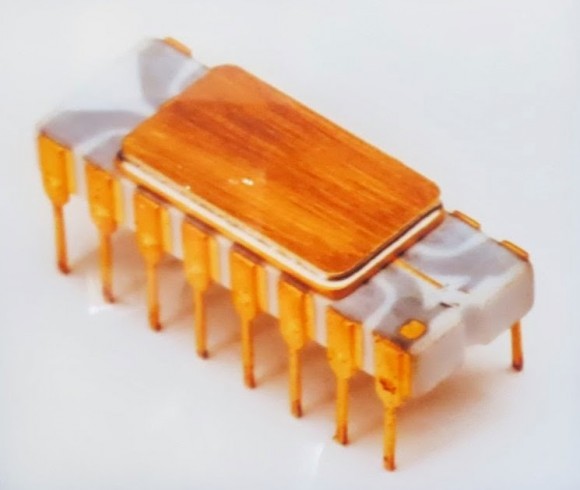
This and all following image credits: Richard Hay for aNewDomain.net.
Another gem from Bob Noyce:
“The integrated circuit came out of my own laziness. We took those transistors that were nicely arranged on a piece of silicon, cut them into tiny little pieces, and then shipped them to the customer, and they put them all back together again. Why not cut out the middle ground and just put them together while still on the silicon? That’s what we did.”
– Robert Noyce, “Living Legends,” Nation’s Business Today
Bob Noyce co-founded Intel Corporation with a number of business partners including Gordon Moore who is famous for his “law” stating that the number of transistors on integrated circuits would double approximately every two years and his paper in 1965 predicted the trend would continue for at least 10 years. Well the trend has persistent for many more years than that and has come to be applied to other technologies as well. The capacity will double and the price reduce by 50% every two years or so. http://en.wikipedia.org/wiki/Moore’s_law. They have a picture with Gordon Moore and Bob Noyce in the same office.

Today’s processors are made from 300mm silicon ingots weighing just 122 kilograms.
![]()
![]()
![]()
The ingots are made from purified silicon — they’re 99.9999999 percent pure. That means only 1 part in 10 million is not silicon. Wow.
It is also a far cry from the 50mm ingots they used back in the 1969. The wafers have gotten larger and the transistors have gotten smaller. I seem to recall the more recent processors have 14nm transistors. 14 billionths of a meter per transistor. Crazy. I love this quote from Andy Bryant: “The ingredient we start with is sand. Everything else is value-added by people.”
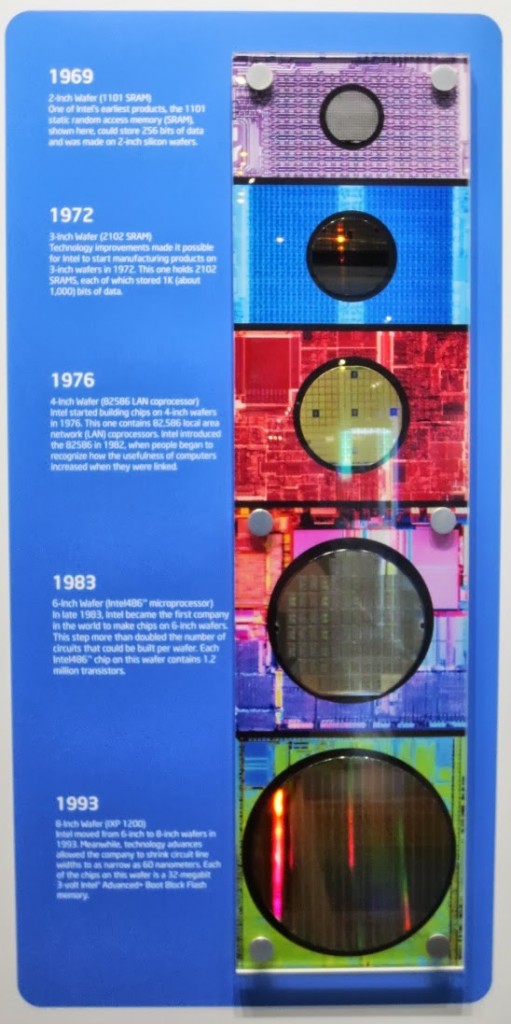
To go to the Intel museum is to reflect on the CPU and binary logic itself. There is something comforting about the black and white logic of binary. It’s 0 or 1. It is or it is not. To be or not to be.
Set Theory.
Everything is in the set or in the compliment of that set. No gray areas. Just logical categories. I once saw a t-shirt that expressed Mr. Miaggi’s advice in binary “Wax 1. Wax 0.”
In a way it is an ordered way to view the universe that is quite different from the way the universe actually is. We uber geeks like binary because there is a logic, however perverse, that governs the actions of a computer system. For instance, there is nothing quite like the comforting exercise of typing your name in binary.
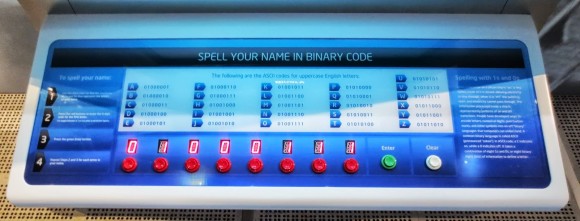
Now the interesting thing about this exercise is that this matrix only allows the user to use upper case phonetic characters to type out a name. There are a similar number of binary codes for lower case letters (not part of the exercise). And over 100,000 characters in UTF-8 that have been defined to represent virtually every writing system ever devised. Chinese characters, Korean Hongul, Sanskrit, Japanese Kanji, Russian Cyrillic, and on and on. Of course it takes 20 bits to represent UTF-8 characters while the displayed exercise uses 8 bits.
So binary character representation goes far beyond the exercise represented at the museum but this gives an idea of what a computers do billions of times a day all over the world in every language known. And often using Intel processors.
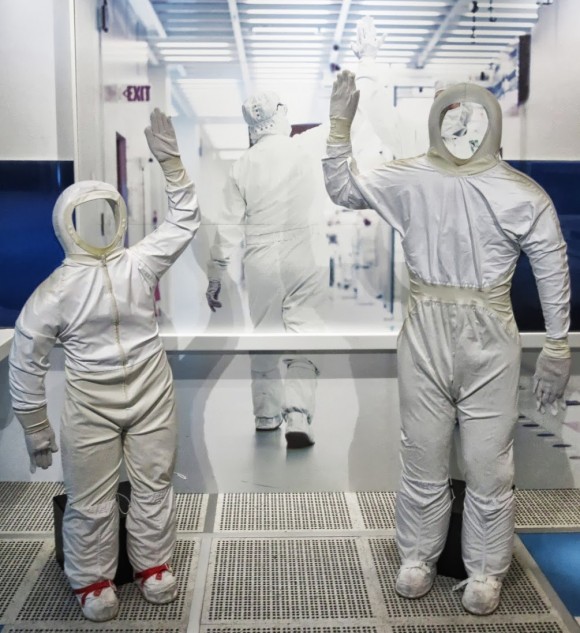
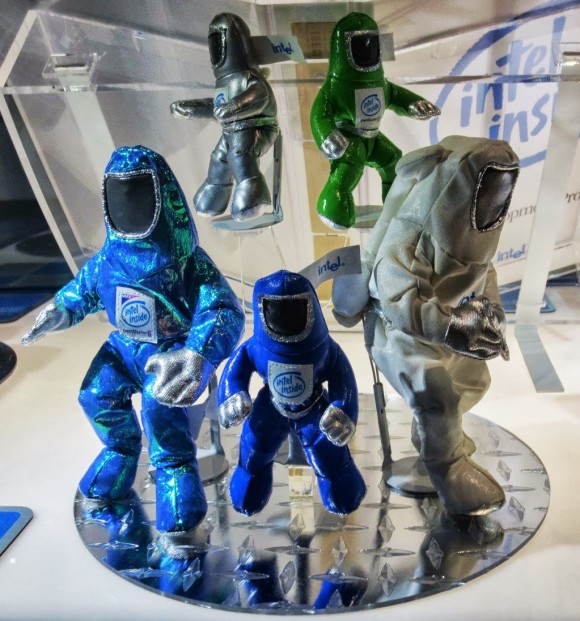
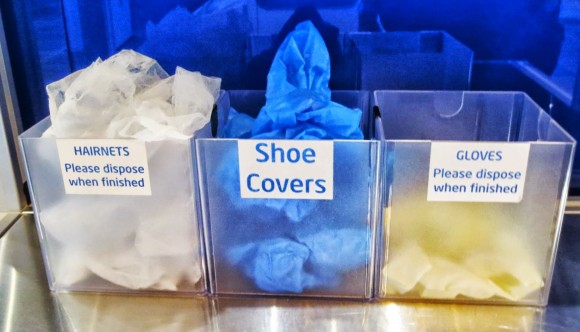
Now the most likely source of contamination to the process that includes such steps as photo lithography and etching is the people in the clean room. A standard operating room at a hospital is considering a level 100 clean room in that there are 100 impure parts per million. Typically silicon CPU fab uses level 10 clean rooms (10 impure parts per million). Needless to say it takes a lot to get a room that clean. And part of what it takes are bunny suits, hairnets, gloves, shoe covers, and so on and so forth.
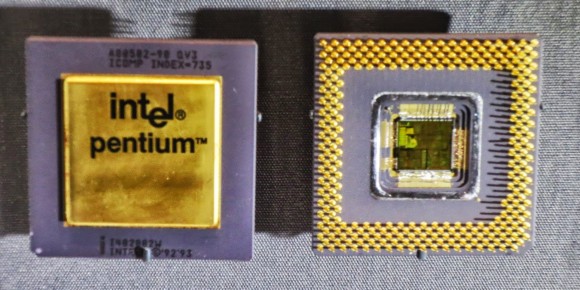
Of course there are example chips of some of the most famous Intel processors at the Intel Museum. The 8086, the i386, and i486 are all prominently displayed.
I choose to display the Intel Pentium because I have a good story of my own experience with Intel CPUs in the 1990s. Looking at the Pentium, you notice the pins are angled on one corner to allow the processor to only be inserted one way into the motherboard. T
his represented a feature enhancement over previous CPUs.
The company I was working for in 1995 had PCs using 100Mhz i486 CPUs. Occasionally a fan would die and I would need to replace the cooling module atop the CPU.
The fans were stuck to the CPU using epoxy or resin. So my methodology, flawed as it was, involved removing the CPU and fan, then separating the fan from the CPU. I’d look at the direction the Intel logo face, and, after replacing the fan, I’d replace the CPU with the Intel facing the same way as it was when I removed it.
This methodology worked flawlessly over half a dozen times.
Then I encountered an incident that exposed the flaw in my methodology. The pins on the i486 were identical — so nothing physically prevented you from inserting the chip the wrong way.
I had been avoiding that by looking at which way the Intel type was facing when I was performing maintenance on the PCs. Then I got a machine where the resin connecting the CPU and the fan was a real pickle. It took almost five minutes to pop the fan off the CPU and, when it popped, it popped big time. All the pieces went flying.
I never got a chance to verify which way the Intel type had been oriented. That’s because the type is obscured by the fan when it is attached.
And now we are at the part of the story where I failed to have an appreciation for what happens when you place the CPU in the wrong way.
I thought it was like an ISA bus expansion card. If you do not seat it properly it just did not work. Reseat the module and restart. No sweat.
But the CPU is not like that. Now I knew I only had 1 chance in 4 of inserting it the correct way (since I was guessing). But I figured, worst case, I have to give it a few quarter turns until I alight on the correct setting. Not the worst case, as it turned out.
I turned on the PC and there is a rancid pop — and then an acrid smell of fused something or other emanating from the computer. I call my hardware supplier and describe the issue, and he said, “It sounds like you put the processor in the wrong way. Is that possible?”
I admitted that was a non-zero probability. So then he said, “Well you can’t do that because if you put the CPU in the wrong way, it goes from being a powerful integrated circuit module to being a direct electrical conduit to the Motherboard and the question is not if, but what will blow first.”
Noted.
He then went on to inquire, “Didn’t you look for the notch?”
Turns out the notch corner had a matching corner on the motherboard to guide you to connect it properly.
I just did not know about the notch until I realized how important it was not to muffin that bit. Then they go and angle the corner on the Pentium pins — in addition to the notch that is still there –to save future techs from making the same mistake.
That story is basically an extension of the axiom saying that, “the amount of experience you have is directly related to the amount of hardware you have destroyed.”
The good news in that case was it only required replacing the $90 motherboard to repair the system. The RAM and CPU were fine.
And this story directly relates to Intel CPUs on display at the Intel Museum. Even though the issue is long addressed, it’s the kind of thing the Intel Museum makes your reflect on.
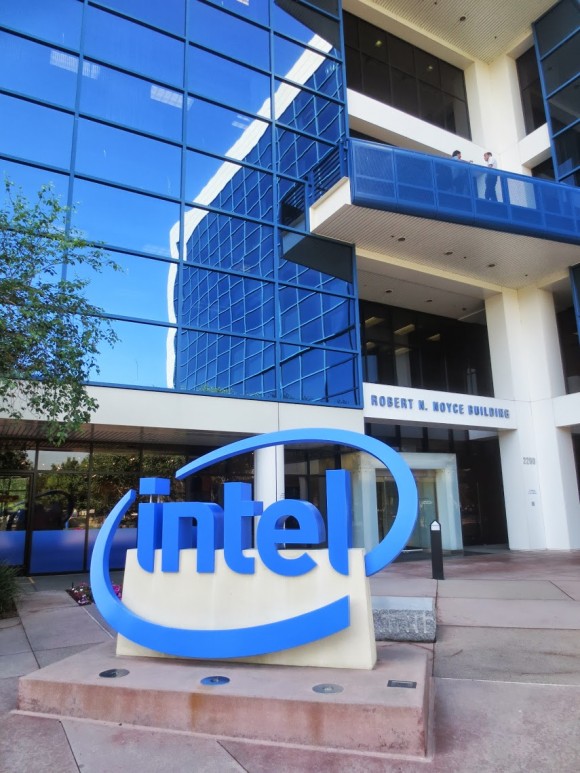
I have to admit I am kind of envious that Intel has a museum and Google, where I work as an engineer these days, doesnot.
I find that on weekends and holidays people visiting the San Francisco Bay Area will come to Google to explore and take pictures and see the campus — even though there is no place for them to go and see displays of famous Google products with which they seem to have an emotional attachment.
Anyway, this piece is about the Intel Museum and how cool it is that they have a place that invites people to come and engage with the process that results in the CPUs at the heart of so many computing devices.
It even informs somewhat about integrated circuits in general and the way processors work, which also applies to ARM processors that power iPhones, Ipads, Android devices, tablets, and many mobile devices people use with increasing frequency. Intel will continue to be a leading CPU provider. Just with the rise of mobile they have had to share the stage a bit. Maybe WWDC will usher in a new MacBook Pro and with it, a new system powered with Intel Inside.
One other noteworthy piece of information is that the Intel Museum is absolutely free of charge and photography is encouraged.
For aNewDomain.net,“ANewDomain.net, I am Richard Hay.
Photo credits: Richard Hay for aNewDomain.net.
Below, find details on the Intel Museum:
2200 Mission College Boulevard
Santa Clara, CA 95054
408-765-5050
Email: museum@intel.com










